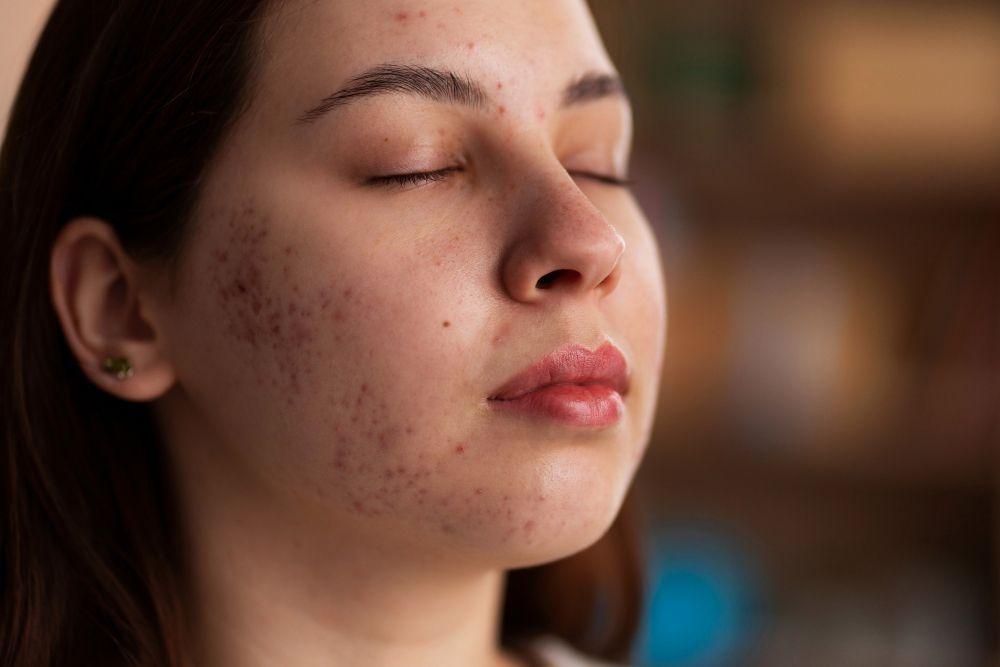Hyperpigmentation is a common skin concern that affects people worldwide, but it doesn’t look the same on every skin type. Some may notice dark patches, while others develop uneven skin tone or stubborn post-acne marks that seem to linger. The way hyperpigmentation shows up—and how it should be treated—varies greatly depending on your skin type and tone.
Understanding how hyperpigmentation behaves across different skin types is key to finding the right prevention and treatment strategies. In this article, we’ll explore what hyperpigmentation is, how it impacts various skin types, and the best approaches for managing it effectively.
What Is Hyperpigmentation?
Hyperpigmentation occurs when the skin produces excess melanin, the natural pigment responsible for giving skin, hair, and eyes their color. This overproduction leads to dark spots, patches, or general unevenness in skin tone.
Common causes of hyperpigmentation include:
- Sun exposure – UV rays stimulate melanin production.
- Hormonal changes – pregnancy, birth control, or menopause can trigger melasma.
- Post-inflammatory responses – acne scars, eczema, or skin injuries often leave behind dark spots.
- Aging – over time, age spots develop due to cumulative sun exposure.
Although anyone can develop hyperpigmentation, the condition’s severity, appearance, and treatment response often depend on the individual’s skin type.
How Skin Type Influences Hyperpigmentation
The Fitzpatrick scale is often used to classify skin types, ranging from Type I (very fair, always burns, never tans) to Type VI (deeply pigmented dark brown or black skin, never burns). Each type has unique challenges when it comes to hyperpigmentation.
Hyperpigmentation in Fair Skin (Types I–II)
Fair skin tones are more prone to redness, sunburn, and visible damage. For these skin types:
Appearance: Hyperpigmentation often shows as freckles, age spots, or sunspots. Redness from acne or rosacea may also darken into lingering marks.
Main Triggers: UV exposure is the leading cause. Even short periods of unprotected sun exposure can trigger spots.
Treatment Approach:
- Daily use of broad-spectrum sunscreen with high SPF is critical.
- Ingredients like niacinamide, vitamin C, and retinoids help brighten and even skin tone.
- Gentle exfoliation with AHAs (like glycolic acid) can reduce surface pigmentation.
Hyperpigmentation in Medium Skin (Types III–IV)
Medium skin tones tan more easily but are also at risk of developing stubborn dark patches. For these skin types:
Appearance: Sunspots, acne scars, and melasma are common. Dark marks from pimples or injuries may take longer to fade.
Main Triggers: Both UV damage and post-inflammatory hyperpigmentation (PIH) are frequent culprits.
Treatment Approach:
- Sunscreen is still non-negotiable to prevent further darkening.
- Targeted treatments like azelaic acid, kojic acid, and arbutin are effective for brightening.
- Professional treatments such as chemical peels can help but should be approached cautiously to avoid worsening PIH.
Hyperpigmentation in Darker Skin (Types V–VI)
Darker skin tones have higher natural melanin levels, which offer more sun protection but also mean that pigmentation issues can be more intense and long-lasting. For these skin types:
Appearance: Hyperpigmentation often presents as dark, raised spots or widespread discoloration. PIH from acne, razor bumps, or eczema is particularly stubborn.
Main Triggers: Inflammation is the biggest cause—anything from acne to insect bites can leave behind dark patches. Harsh skin treatments or burns may also worsen pigmentation.
Treatment Approach:
- Focus on gentle skincare to avoid irritation that could trigger further pigmentation.
- Ingredients like niacinamide, tranexamic acid, and licorice extract can help lighten spots without causing irritation.
- Laser treatments should be carefully selected, as certain types may worsen pigmentation in darker skin. Consulting a dermatologist is essential.
Universal Tips for Managing Hyperpigmentation
No matter your skin type, a few universal practices can help prevent and manage hyperpigmentation effectively:
Prioritize Sun Protection
Apply a broad-spectrum sunscreen daily (SPF 30 or higher).
Reapply every 2–3 hours if outdoors.
Wear hats and seek shade to reduce exposure.
Be Consistent With Skincare
Brightening ingredients like vitamin C, niacinamide, and retinoids work gradually—patience is key.
Avoid harsh scrubs or treatments that irritate skin, as inflammation can worsen pigmentation.
Adopt Healthy Habits
A balanced diet rich in antioxidants supports skin repair.
Staying hydrated and getting enough sleep promotes overall skin health.
Seek Professional Guidance
Dermatologists can recommend tailored treatments, from chemical peels to laser therapy.
A professional evaluation ensures that treatments are safe and effective for your specific skin type.
When to See a Dermatologist
While many cases of hyperpigmentation can be managed with over-the-counter products and a consistent skincare routine, some require professional help. You should consult a dermatologist if:
- Dark patches spread quickly or worsen despite home care.
- Pigmentation is accompanied by itching, bleeding, or changes in texture.
- Over-the-counter treatments cause irritation or fail to show improvement after several months.
Final Thoughts
Hyperpigmentation is not a one-size-fits-all condition. How it develops and responds to treatment depends largely on your skin type and tone. Fair skin may struggle with freckles and sunspots, while medium tones often face melasma and stubborn acne marks. Darker skin tones, on the other hand, deal with long-lasting PIH from even minor skin injuries.
The key to success lies in understanding your skin, using targeted ingredients, protecting against sun exposure, and seeking professional guidance when necessary. By tailoring your approach, you can achieve a clearer, more even complexion—no matter your skin type.
Read Also: Why Hyperpigmentation Happens and the Best Way to Fix It



